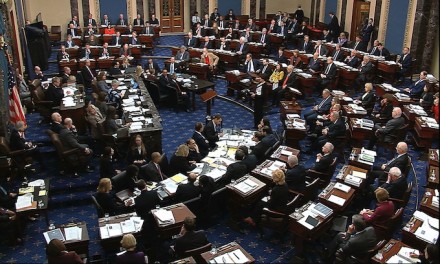The United States in 2020 experienced the biggest rise in murder since the start of national record-keeping in 1960, according to data gathered by the FBI for its annual report on crime.
The Uniform Crime Report will stand as the official word on an unusually grim year, detailing a rise in murder of around 29%. The previous largest one-year change was a 12.7% increase in 1968. The national rate – murders per 100,000 – still remains about one-third below the rate in the early 1990s.
The data is scheduled to be released Monday along with a news release, but it was published early on the FBI’s Crime Data Explorer website. The FBI’s UCR program defines murder and non-negligent manslaughter as the willful killing of one human being by another.
The FBI said some numbers could change by Monday as it reviews possible discrepancies and receives updates. But the main conclusions of the data are highly unlikely to change.
Separately, an independent analysis of big cities finds at least one promising sign that the murder rate may be flattening this year: The increase in murders this summer does not appear to be as large as the record spike last summer.
Previously, the largest one-year increase in total number of murders was 1,938 in 1990. The FBI data shows almost 5,000 more murders last year than in 2019, for a total of around 21,500, which is still below the particularly violent era of the early 1990s.
Analysts have pointed to many possible contributing factors such as various pandemic stresses; increased distrust between the police and the public after the murder of George Floyd, including a pullback by the police in response to criticism; and increased firearm carrying.
About 77% of reported murders in 2020 were committed with a firearm, the highest share ever reported, up from 67% a decade ago.
The change in murder was widespread – a national phenomenon and not a regional one.
Murder rose more than 35% in cities with populations of more than 250,000 that reported full data. It also rose more than 40% in cities with populations of 100,000 to 250,000, and around 25% in cities under 25,000.
No geographic area was spared.
The FBI reported in March that murder was up at least 20% in every region of the country, including around a 30% increase in the Midwest.
Overall, murder was up at least 20% in counties carried by President Joe Biden as well as by former President Donald Trump in 2020.
One regional factor stayed consistent: Louisiana had the highest murder rate for the 32nd consecutive year.
Murders were already elevated in the first few months of 2020, then increased significantly in June and stayed high through the remainder of the year.
Yet, even with the rise in murders and a roughly 5% increase in violent crime, the new data show that overall major crimes fell about 4% to 5% in 2020.
Murder makes up a tiny portion of major crimes as defined by the FBI.
Some of the reduction in overall crime was related to the pandemic. Theft made up around 7 in 10 property crimes, and it is hard to commit shoplifting when stores are closed.
But overall crime was dropping long before the pandemic; 2020 was the 18th consecutive year of declining overall crime.
The evidence from big cities suggests that murder is still up in 2021 relative to 2020, although the increase is not nearly as big.
Some cities – like Portland, Oregon, and Las Vegas – are seeing big increases relative to last year; some big cities, like Chicago and New York, are seeing flat numbers after sizable increases in 2020; and some places, like St. Louis, which had the nation’s highest murder rate in 2020, are seeing sizable declines.
The first half of this year largely followed the pattern begun in the second half of last year. The rate of increase in murder appears to be decelerating as more cities that had big increases starting last summer begin to report data for this summer.
The FBI has published national UCR estimates every year since 1960, but it is switching to a new crime reporting system next year.
Last year, the FBI began publishing quarterly crime updates, but this year it did not produce national updates for the first or second quarter because not enough agencies submitted data. This possibly reflects struggles among law enforcement agencies nationwide to switch to the new system, called NIBRS, which is expected to provide more insight into a wider array of crimes at both the local and national level.
Copyright © 2021 Capital Gazette Newspapers
—-
This content is published through a licensing agreement with Acquire Media using its NewsEdge technology.



















I.A.W. U.S. Census & FBI (Table 43a)
Black males make up about 6% of the U.S. population but every year commit ~56% of all the murders and ~54% of all robberies in the U.S… Every year in the U.S. there are ~6,000 African-Americans men, women and children killed and 92% of them were killed by fellow African-Americans.
How many bodies do you have to step over to get to the one that you think is important only because a White police officer was involved?
“the new data show that overall major crimes fell about 4% to 5% in 2020”. What a joke. Crime was up (antifa, blm etc.) but no one is prosecuted. So when one loots buildings, when one steals, when one burns down buildings, when one tears down statues, when one assaults police officers or citizens, no one is arrested so crime is “down”. When one can steal 950 dollars of goods from stores and no one is prosecuted, crime goes “down”.
You can never believe anything that comes out of the FBI, they are the most corrupt Law Enforcement agency in the United States, by far.
Amen, JohnC. I could not agree more and I make no exception for the low ranks.
As i see it, THE ENTIRE bloody agency is rotten to the core. NOTHING IS WORTH saving.. Just bury it now…
What was the crime rate before welfare and food stamps ???? Chicago crime rate alone has shown free, free stuff doesn’t work. The unemployment rate for blacks in1954 was 9.9% but today it’s 12.9% . It’s higher. So the great social experiment has not worked
I think the murder rate would be double what they are publishing if the truth be told about those being murdered by
doctors, insurance companies, hospital groups, hospitals and government by withholding drugs they KNOW will cure
covid or should I say fauci disease.
We also need to include the #s of those sick, that the biden admin is WELCOMING INTO our nation, and shuttling around this place, to INFECT everyone.
There is a mistake in this article. It states….”Analysts have pointed to many possible contributing factors such as various pandemic stresses; increased distrust between the police and the public after the murder of George Floyd”
George Floyd wasn’t murdered. He died of excited delirium caused by fentanyl overdose.